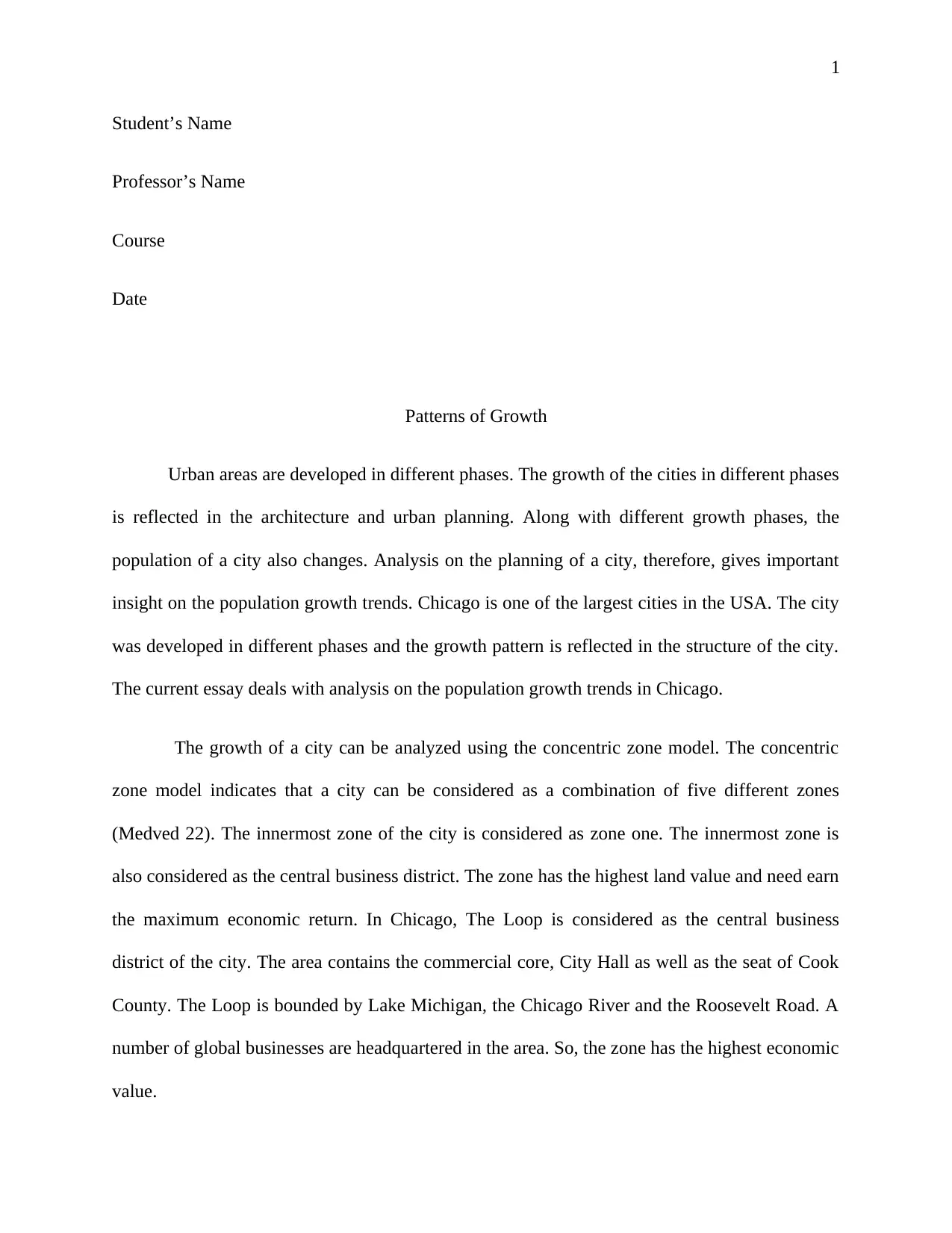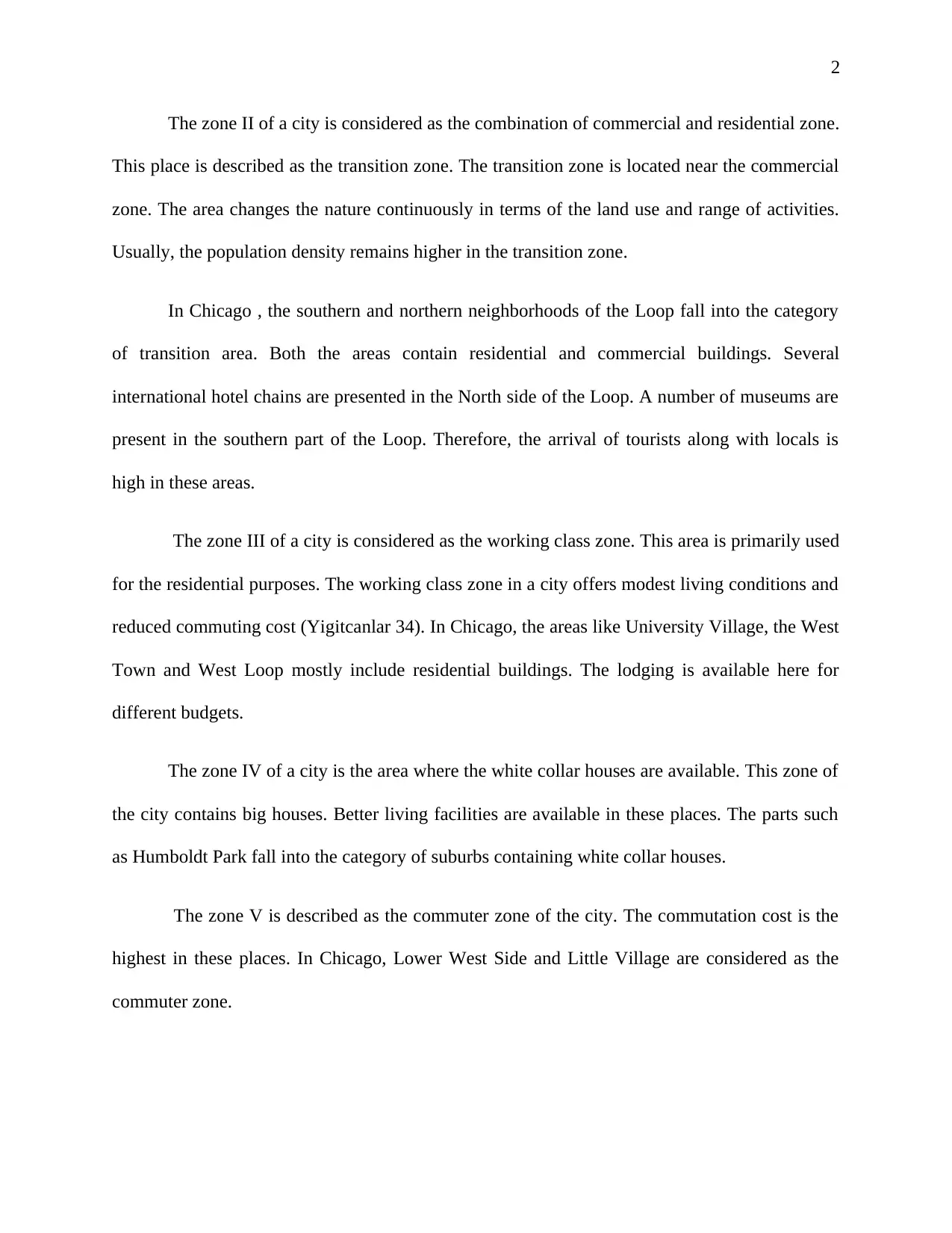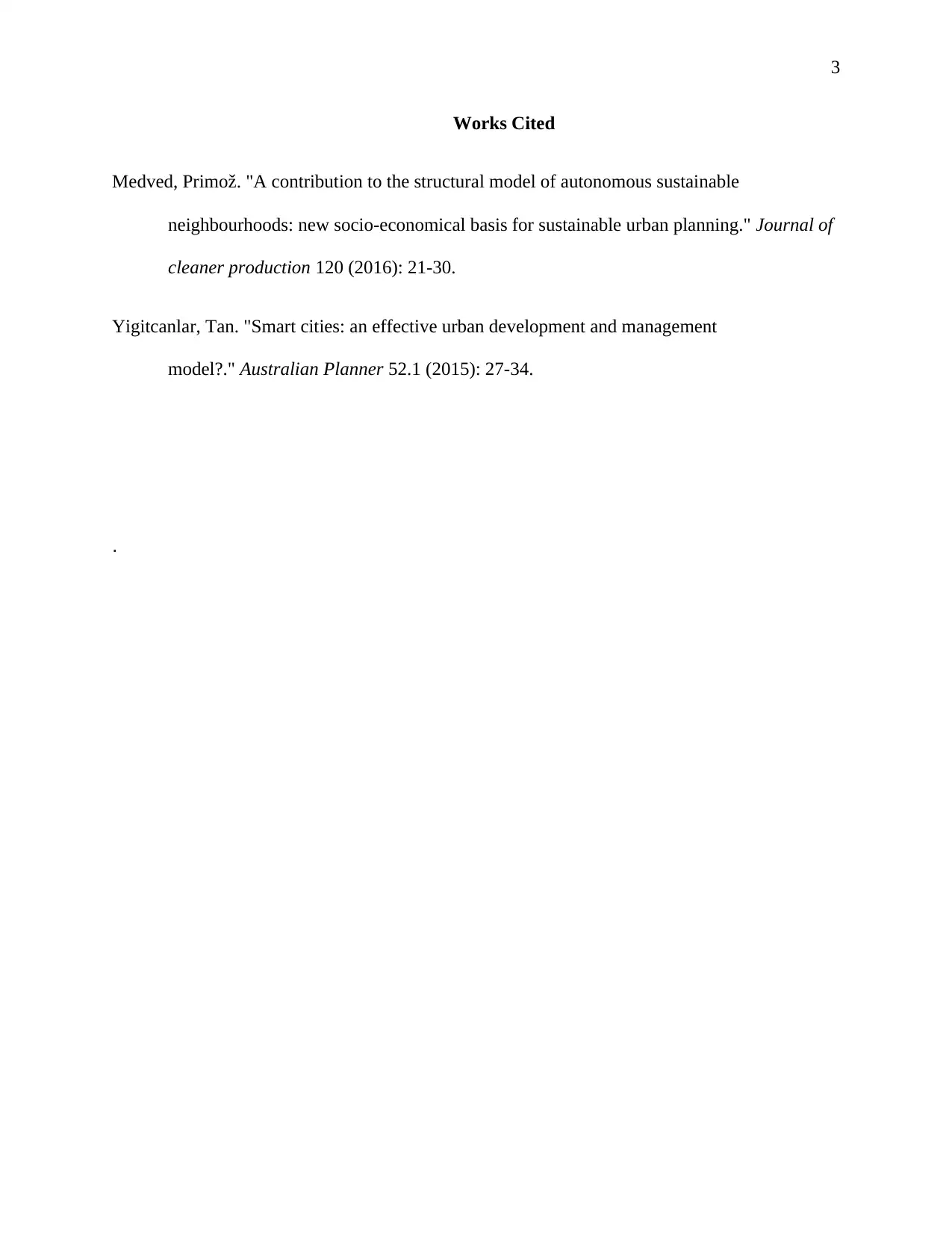Chicago Population Growth Analysis
VerifiedAdded on 2019/09/30
|3
|630
|331
Essay
AI Summary
This essay analyzes the population growth trends in Chicago using the concentric zone model. It divides the city into five zones: the central business district (The Loop), the transition zone (southern and northern neighborhoods of the Loop), the working-class zone (University Village, West Town, West Loop), the white-collar zone (Humboldt Park), and the commuter zone (Lower West Side and Little Village). The essay describes the characteristics of each zone and how they reflect the city's growth patterns. The analysis provides insights into the relationship between urban planning and population distribution in Chicago. The essay cites sources from Medved (2016) and Yigitcanlar (2015) to support its analysis.
1 out of 3





![[object Object]](/_next/static/media/star-bottom.7253800d.svg)